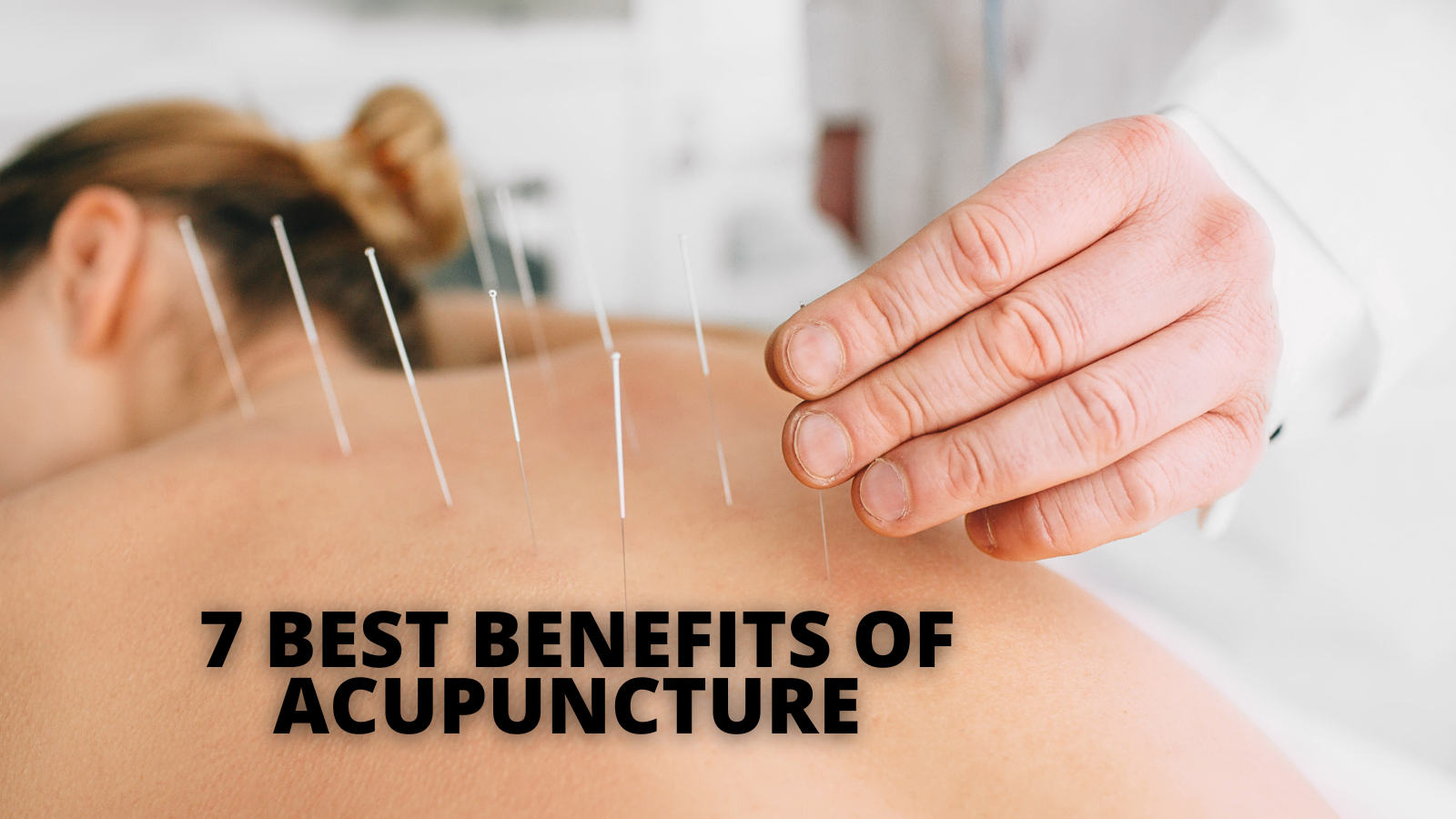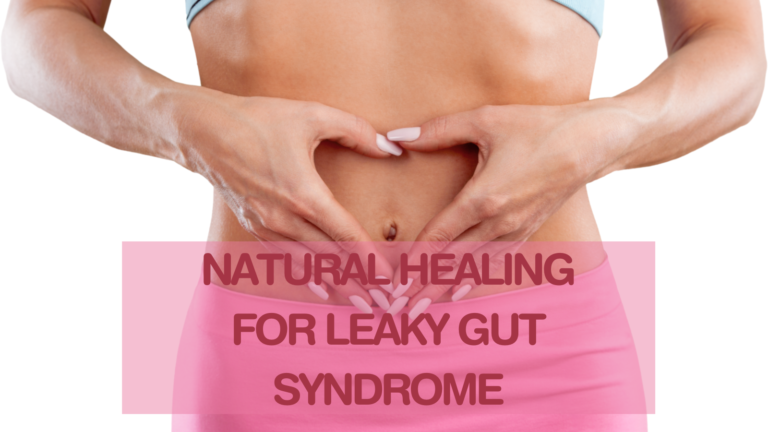Best Benefits Of Acupuncture
Best Benefits Of Acupuncture
Acupuncture includes inserting tiny, solid, metallic needles into the skin that are either electrically or manually stimulated by the practitioner using small, exact movements.
Acupuncture is an important part of traditional Chinese Medicine and is most frequently used to manage Pain. It is being utilized more regularly for overall wellness, which includes stress reduction.
According to traditional Chinese Medicine, acupuncture is a method for regulating the flow of life force, sometimes referred to as chi or qi, which is said to move along meridians in your body.
The theory behind acupuncture is that your energy flow will be restored by inserting needles at specific points along these meridians.
On the other hand, many Western practitioners see acupuncture points as locations to activate the muscles, connective tissue, and nerves. According to some, the body's natural painkillers are increased by this stimulation.
Hair-thin needles are used during acupuncture. Most people claim to only experience minor pain during needle insertion. A pressure or aching sensation may be felt after the needle has been placed.
The therapy may involve heating the needles or passing a gentle electric current over them. Acupuncture has been said to give some people an energy boost. Some people claim to be at ease.
Pain during therapy can result from incorrect needle insertion. Obtaining acupuncture therapy from a licensed professional is crucial for this reason.
The FDA governs acupuncture needles under the same single-use sterility standards and good manufacturing procedures as other medical devices.
History Of Acupuncture
Acupuncture is an age-old Chinese medical practice for pain management, disease treatment, and overall health enhancement.
It was created in China before 2500 BCE, and by the late 20th century, it was being used all across the globe.
One or more tiny metal needles are inserted into the skin and underlying tissues of the body at specific locations during acupuncture.
Chinese philosophy's dualistic cosmic theory of yin and yang is where acupuncture originated. The ground represents the yin, the female principle, which is passive and dark.
The heavens represent the yang, which is active and light. The forces of yin and yang operate in the human body throughout the natural world.
An imbalance or the preponderance of these two forces in the body causes disease or bodily disharmony. Chinese Medicine aims to bring the yin and the yang back into balance to heal the patient.
The body's qi, or life force, becomes obstructed when yin and yang are out of harmony. Qi moves across the body's 12 meridians, or routes, each linked to a significant visceral organ (such as the liver, kidney, etc.) and a working body system.
Acupuncture is intended to alter how yin and yang are distributed in these channels to allow the qi to flow freely and harmoniously.
To perform acupuncture, needles are inserted into any of thousands of points distributed over the 12 fundamental meridians and a handful of specialty meridians. It's possible for the hands to be somewhat arrowheaded or to have tiny points.
The average insertion depth is 3 to 10 mm (0.1 to 0.4 inches); nevertheless, some treatments call for insertions up to nearly 25 cm (10 inches).
After being implanted, a needle can be rotated, twisted, or used with a low-voltage alternating current.
A hand put into the thumb pad is expected to generate analgesia in the abdomen. However, the doctor routinely places needles near the area where they intend to act.
For example, the first six points of the yin lung meridian deal primarily with swollen joints, excessive joint heat, bleeding from the nose, heart pains, mental depression, and the inability to stretch the arms above the head.
Following points on the same meridian may similarly affect various areas or conditions. Countless diagrams and models are used to understand where the issues are.
Method Of Acupuncture
Qi is used in Chinese Medicine to describe the body's energy. Practitioners of Chinese Medicine hold that qi disturbances cause energy imbalances in the body that result in sickness.
By inserting needles into certain acupuncture locations (also known as “acupoints”) on the body, several types of acupuncture work to restore the body's qi balance.
The body contains hundreds of acupoints along 14 main meridians, often known as energy-carrying pathways.
The needles activate the body's natural processes to:
- React to a condition or symptom. Balance the body again. Release organic substances, including endorphins, the body's natural analgesics, and neurotransmitters that regulate nerve impulses.
- By stimulating sites along 14 energy lines, acupuncture aims to open up the flow of the body's life force, or “chi.”
- According to some scientists, the needles may increase blood flow, alter brain activity, and trigger the body to release endorphins, which are natural painkillers.
- The placebo effect, often known as the acupuncture effect, is alleged by skeptics to be the only reason acupuncture works.
- Due to the thinness of acupuncture needles, most patients report minimal to no discomfort during insertion.
- After the procedure, patients frequently report feeling refreshed or invigorated. The needles, however, may result in brief pain.
According to TCM, good health results from a harmonic balance between the yin and yang extremes of the life force known as Qi pronounced “chi.”
According to supporters, an imbalance between these factors leads to sickness. TCM asserts that the body's meridians, or energy lines, are the means through which Qi moves.
The 361 acupuncture points on the body can be used to access these meridians and energy flows.
The energy flow can be balanced again by inserting needles into these locations in the right combinations.
According to a 2017 analysis, numerous acupuncture points are located in areas where stimulation may impact the activity of multiple sensory neurons. These locations are also referred to as receptive fields.
The physical stimulation caused by inserting a needle at certain places may alter how the central nervous system and muscles process Pain and enhance blood flow to specific body regions.
A 2018 meta-analysis of the impact of acupuncture on chronic pain discovered that the treatment could offer pain reduction effects that can be distinguished from placebo. It is unclear how acupuncture functions, though.
Benefits Of Acupuncture
Most people have heard about the incredible results of acupuncture in decreasing chronic Pain and enhancing life quality in patients with various musculoskeletal illnesses.
The other physical, mental, and emotional advantages of this traditional healing technique are seldom known. Acupuncture has several unexpected benefits, including the following:
1. Relieves Chronic Pain
Low back and knee discomfort brought on by wear-and-tear osteoarthritis may be lessened by acupuncture (OA).
In May 2017, the journal Pain published a meta-analysis of over 18,000 people with chronic Pain (including low back, neck, and shoulder pain; knee OA; and headache or migraine).
It showed that the pain-relieving effects of acupuncture therapy continued for a full year. If patients had improvement after a year without additional acupuncture therapy, it had to be evaluated more thoroughly.
However, in response to a request for public input from the U.S. Center for Medicare and Medicaid Services on whether to include acupuncture therapy and licensed acupuncturists for federal payment, the Society for Acupuncture Research (SAR) outlined several research findings, including the meta-analysis published in Pain.
SAR suggested acupuncture as part of a holistic pain-management plan for aging Americans in its feedback, published in April 2019 in the Journal of Alternative and Complementary Medicine.
After that, in January 2021, the CMS finalized its choice to pay for Medicare enrollees' acupuncture treatments for persistent low back pain.
The fascia, a type of connective tissue that wraps around all of your muscles and organs and is richly innervated, is said to be penetrated when an acupuncturist inserts a needle, according to Rosanne Sheinberg, MD, a medical acupuncturist and the director of integrative Medicine for anesthesia and critical care medicine at Johns Hopkins Hospital in Baltimore.
2. Tames Allergic Asthma
The American Academy of Allergy, Asthma, and Immunology classifies allergic asthma as asthma triggered by inhaling allergens such as pollen, dust, food, and mould. Acupuncture may be a useful adjunct treatment for allergic asthma.
For instance, in a study of individuals with allergic asthma that was published in April 2017 in The Journal of Alternative and Complementary Medicine, those who received up to 15 acupuncture treatments over three months saw greater improvements in their quality of life for both their disease and their general health than those who only received routine care.
Interleukin-6 (IL-6), a cytokine produced during an injury or illness, was also reduced. According to a study, IL-6 might lead to chronic inflammation if it increases too much.
Since chronic inflammation is a hallmark of asthma, evidence-based complementary and alternative medicine research suggests that acupuncture may benefit people living with asthma by lowering pro-inflammatory proteins like IL-6 and, in turn, reducing inflammation.
3. Controls Nausea And Vomiting
Chemotherapy frequently causes nausea and vomiting as adverse effects. A study published in January 2020 in Medicine found that the effectiveness of drugs used to treat nausea and vomiting is frequently insufficient.
Raising the dosage to make them more effective may have additional side effects, such as headaches, dizziness, and constipation.
An alternative treatment option can be acupuncture. Researchers found that acupuncture is a safe and helpful supplementary therapy for cancer patients experiencing nausea and vomiting brought on by chemotherapy.
Still, they added that more research is needed to support this. The review included 41 randomized, controlled trials.
Be aware that sometimes, an effect can be achieved without using a needle to enter the body. Notably, you might not even need a hand to cause a reaction.
Use alleviate nausea at home, Memorial Sloan Kettering Cancer Center advises patients to acupressure (apply pressure with your fingers to acupuncture points) specific acupoints.
An acupressure band resembling a bracelet was used to apply pressure to the P6 acupuncture point on the wrist over four days to treat 90 patients with chemotherapy-induced nausea and vomiting after treatments for acute myeloblastic leukemia.
4. Improves Sleep
For insomnia and those with sleep disorders, acupuncture may be a beneficial therapy. Insomnia is routinely treated with sedatives and other medications.
A study including 72 participants published in September 2017 in Sleep Medicine found that while sedatives may be useful in the short term, prolonged use may have undesirable side effects, such as excessive sleepiness and drug dependence.
The randomized, controlled experiment found that, compared to those who got sham acupuncture (the control group, for whom no needle penetrated the skin and only the plastic tubing touched the skin), those with insomnia who received acupuncture three times per week for four weeks experienced significant improvements in both sleep quality and anxiety.
Similar outcomes were discovered in another analysis of 30 randomized, controlled trials. In general, acupuncture outperformed sham acupuncture in enhancing daytime functioning and sleep quality.
5. Helps To Prevent And Reduce Headache And Migraine Severity
According to research, acupuncture may help relieve uncomfortable headaches, migraines, and chronic pain.
According to study findings released in April 2017 in JAMA Internal Medicine, those diagnosed with migraine without aura who underwent acupuncture five days a week for four weeks had fewer headaches than those who underwent sham acupuncture. This was true even 16 weeks after the studies started.
Additionally, an analysis of 22 trials involving individuals receiving migraine prophylaxis discovered that acupuncture treatments might be equally beneficial as preventative medication treatments (mainstream medical approaches taken daily to prevent migraines).
Like the migraine review, the authors reviewed 12 studies involving people with acute and chronic tension-type headaches.
According to reviewers, acupuncture may help treat this type of Pain, but more studies are required to confirm this, especially ones that contrast acupuncture with alternative therapies.
6. Eases Menstrual Cramps
Acupuncture is another effective complementary therapy for painful periods. In a meta-analysis published in June 2018 in Medicine, researchers looked at 49 randomized, controlled trials.
They discovered that traditional acupuncture and electroacupuncture, which uses a weak electric current instead of needles, were more effective at reducing menstrual pain than nonsteroidal anti-inflammatory drugs.
The second study of 74 women, published in July 2017 in PloS One, suggested that more frequent acupuncture sessions would be more helpful in easing menstrual discomfort.
The improvement in pain intensity was larger in women who had three acupuncture sessions the week before their period than in those who had three acupuncture treatments every 7 to 10 days between their periods. The women had a total of 12 acupuncture treatments.
All the women had 12 acupuncture treatments throughout three menstrual cycles, including one within 48 hours of their period.
Studies involving bigger populations of women are required to learn whether acupuncture helps relieve period pain and the appropriate frequency of treatment.
7. Aids Recovery After Surgery
It may take a while to recuperate from surgery fully. According to Johns Hopkins Medicine, some individuals experience various symptoms following surgery.
These include post-operative nausea and vomiting from general anesthesia, discomfort at the incision site, restlessness and sleep issues, constipation, and sore throat.
Acupuncture is suggested by several medical professionals, including Sheinberg, to ease some of these symptoms and encourage healing.
Patients who got acupuncture after surgery reported considerable improvements in sleep, anxiety, discomfort, fatigue, nausea, and drowsiness in a trial with 172 participants published in January 2017 in Integrative Cancer Therapies.
Sheinberg claims that other patients have experienced reductions in hot flashes brought on by treatment and peripheral neuropathy (hand weakness or numbness).
One study on women with breast cancer found that participants reported a higher quality of life and decreased hot-flash scores following acupuncture treatments as part of an improved self-care regimen. However, this may depend on the type of chemotherapy and malignancy.
An eight-week acupuncture treatment regimen significantly reduced neuropathic symptoms in women with chemotherapy-induced peripheral neuropathy, according to a study of 40 women published in April 2020 in Oncologist. However, larger, more conclusive studies are required to support these findings.
Risks Of Acupuncture
The dangers are minimal if you receive acupuncture from a qualified, licensed practitioner who uses sterile needles.
Soreness and slight bleeding or bruises where the needles were put are typical side effects. Since single-use, disposable needles are now the norm, there is little chance of infection. Acupuncture is not appropriate for everyone.
Be sure to inform the acupuncturist before beginning treatment:
1. Having A Bleeding Disorder
If you take blood thinners or have a bleeding disorder, your risk of bleeding or bruising from the needles may be enhanced.
2. Having A Pacemaker
Acupuncture that uses light electrical pulses on the needles may affect how a pacemaker functions.
3. During Pregnancy
Some acupuncture points may induce labour, leading to an early birth.
Conclusion
When administered by a qualified practitioner, acupuncture is typically considered safe and can potentially treat several health issues.
However, it's crucial to remain aware of your health issues and hazards and to speak with your healthcare practitioner before beginning therapy, as with all conventional Medicine and complementary and alternative therapies.
Even though acupuncture is generally highly safe, Dr. Chu advises that only qualified healthcare practitioners should do the therapy.
Before beginning therapy, make sure to check the credentials of your practitioner. A National Certification Commission for Acupuncture and Oriental Medicine diploma is required by the majority of states, according to the National Center for Complementary and Integrative Health.
Some medical professionals and osteopathic medicine doctors with varying TCM and medical acupuncture backgrounds also perform acupuncture.
Instead of visiting a more traditional acupuncturist or Chinese medicine practitioner, you might ask them about their education and experience to determine if they fit your needs.
I trust you enjoyed this article on the 7 Best Benefits Of Acupuncture. Please stay tuned for more blog posts to come shortly. Take care!
JeannetteZ
>>>Please click here to read my all-inclusive article about A Comprehensive Guide To Healing Naturally<<<
>>>Are you interested in Natural Healing through Herbs? Please click here for my #1 Recommendation<<<
Your Opinion Is Important To Me
Thoughts? Ideas? Questions? I would love to hear from you. Please leave me your questions, experience, and remarks about this article about the 7 Best Benefits Of Acupuncture in the comments section below. You can also reach me by email at Jeannette@Close-To-Nature.org.
Disclosure
This post may contain affiliate links. As an Amazon Associate and other affiliate programs, I earn from qualifying purchases at no extra cost to you. Read my full affiliate disclosure.
You might also enjoy these blog posts:
Best Pet Bird Care Tips Every Bird Owner Needs To Know
Best Horse Care Tips And Tricks
Best Cat Care Tips For Beginners
Best Steps To Grow Grass In Containers



















